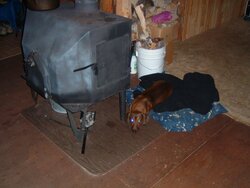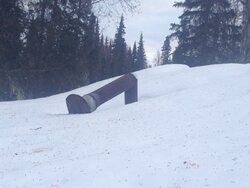I just bought a cabin. I'm trying to ID the stove. The chimney pipe size is 6". The box is big, about 22 inches long. Their is a diffuser on the inside top of the stove. It looks like a half pipe and runs from the chimney hole to the side, about 12" long. Their is a little air flapper valve on the side that feeds air to the bottom of the stove. You can see the flapper on the left.
The log cabin was built in the mid 80's and the stove may be from that era. I'm struggling with the air flow as I get smoke out the stove door when loading with wood. The cabin is not air tight. I get the smoke with the cabin doors open or closed. No damper in the chimney pipe. I just cleaned the pipe. About 13' of total stove/chimney pipe. Also, I must leave the stove door opened slightly to keep the fire going. My wood has been real dry, 3+ year split birch and spruce.
Any ideas on the stove manufacturer?
Suggestions to make this thing breath?
Thanks for any input.
The log cabin was built in the mid 80's and the stove may be from that era. I'm struggling with the air flow as I get smoke out the stove door when loading with wood. The cabin is not air tight. I get the smoke with the cabin doors open or closed. No damper in the chimney pipe. I just cleaned the pipe. About 13' of total stove/chimney pipe. Also, I must leave the stove door opened slightly to keep the fire going. My wood has been real dry, 3+ year split birch and spruce.
Any ideas on the stove manufacturer?
Suggestions to make this thing breath?
Thanks for any input.






